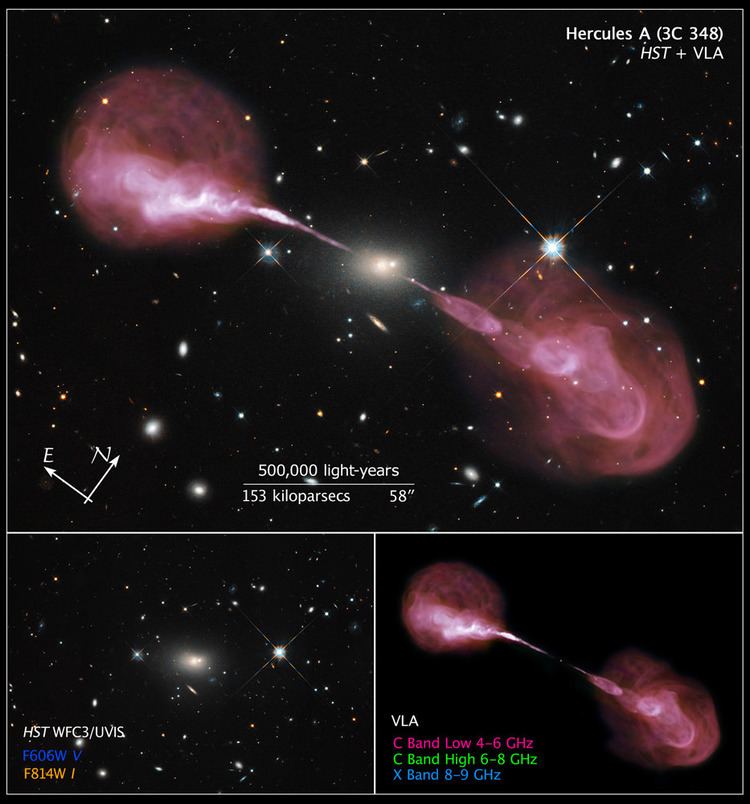Right ascension 16 51 08.15 Distance 2100 Mly(643.9 Mpc) | Declination +04° 59′ 33.32″ Type cD; E3 | |
 | ||
Similar Cygnus A, Hercules, Hercules Cluster, MS 07356+7421, NGC 6166 | ||
Stellar metamorphosis a birthing galaxy hercules a
Hercules A is a bright astronomical radio source within the vicinity of the constellation Hercules corresponding to the galaxy 3C 348.
Contents
Observation
During a survey of bright radio sources in the mid-20th century, astronomers found a very bright radio source in the constellation Hercules. The radio source is strongest in the middle range frequency and found that the source emits synchrotron radiation, suggesting the source of radio emission may be gravitational interaction. In 1959, astronomers from the Radio Astronomy Group (later Cavendish Astrophysics Group) detected the radio source using the Cambridge Interferometer of the Cavendish Observatory in Cambridge University in United Kingdom, including it in the Third Cambridge Catalogue of Radio Sources (3C) as 3C 348, the 348th object detected by the survey.
Galaxy
The galaxy, 3C 348, is a supergiant elliptical galaxy. It is classified as type E3 to E4 of the updated Hubble-de Vaucouleurs extended galaxy morphological classification scheme. Little else is known about the galaxy.
3C 348, the galaxy at the image center, appears to be a relatively normal elliptical galaxy in visible light. When imaged in radio waves, however, plasma jets over one million light years long appear. Detailed analyses indicate that the galaxy is actually over 1,000 times more massive (approx. 1015 solar masses) than our Milky Way Galaxy, and the central black hole is nearly 1,000 times more massive (approx. 4 billion solar masses) than the black hole at our Milky Way's center, one of the largest known. The physics that creates the jets is poorly understood, with a likely energy source being matter ejected perpendicular to the accretion disc of the central black hole.
